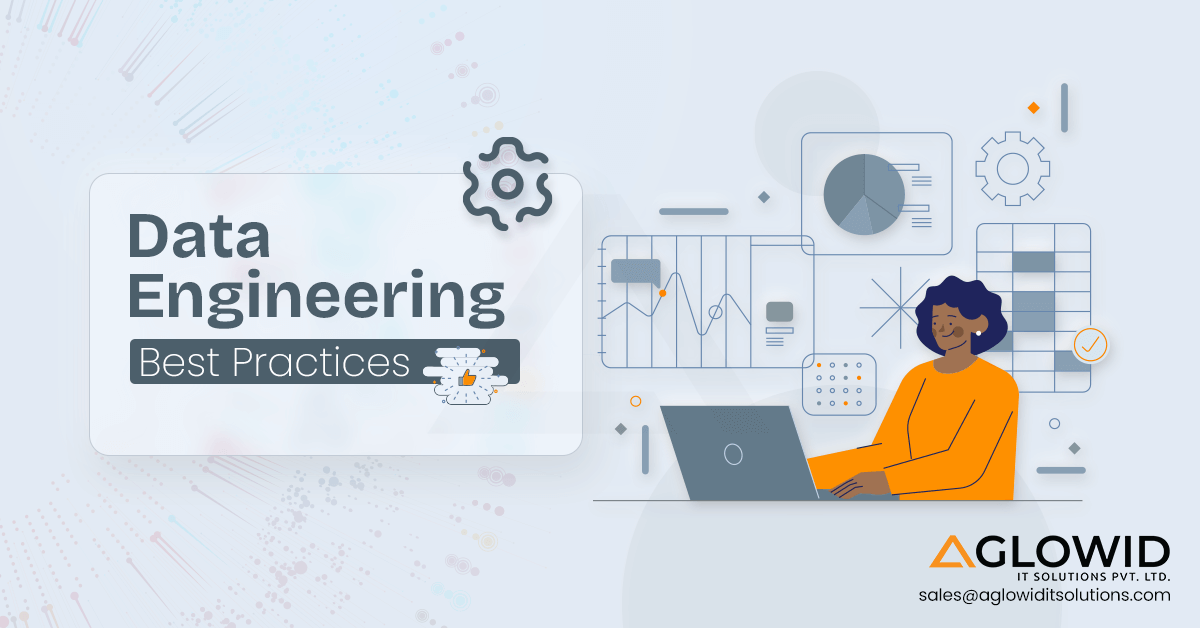Quick Summary:
Have you ever wondered how organizations are turn tons of data into the information used to make the informed decision? Explore a world where data warehouse software such as Amazon Redshift, Google Big Query as well as Microsoft Azure change raw information into tactical intuition. Discover how these tools for warehouse play an important role in helping businesses make informed decision by providing an efficient platform for managing and analyzing data.
In this blog, we’re going to discuss📝
The changing world of data warehousing is a special system that is designed to effectively store, manage and analyze the massive amount of data. Think of it as the center where raw data undergoes through the transformation that reveals the strategic information which becomes the steeping stone of making the decision. But how this information becomes plays an important role? Enter – Data Warehouse Tools
Data warehouse tools is a centralized repository for data from the variety of sources. On the other hand, traditional databases are designed for analyzing data and providing an organized environment which allows for efficient querying and reporting.
In the current scenario data is the king, and data warehouse stands as an example for providing the clarity within the vast and complex information. It is important to keep in mind that its not just a storage facility, it’s a leader in the business intelligence for converting data into the valuable information for making informed decision.
Data warehousing can be described as the guiding light that can help the businesses maximize the value of the information. It’s a step into the future of the data warehousing in which decisions aren’t just based on the gut feeling they are actually backed by the knowledge gained from the help of analysis done with the help of data warehouse software.
Now let’s move forward and understand what you need to keep in mind while selecting the data warehousing tools.
Why You Should Go for Data Warehouse Tools?
In the modern corporate environment, data warehouse solutions are crucial, especially for medium-sized and large businesses. Similar to how an e-commerce company combines customer data with information from other sources, they are invaluable assets. Data simplification, which facilitates effective business intelligence, is a data warehouse’s main purpose. Companies may readily adapt their systems to meet changing needs because of the automated workflows provided by contemporary data warehouse systems.

Data warehouse tool selection is a smart move that will give you a competitive edge over other technologies. Thanks to these technologies, businesses can now access, analyze, and derive actionable insights from their collected data.
They provide speedier support systems and are crucial to both strategic and operational decision-making. Taking stock of staff performance and marketing initiatives, for instance, or staying abreast of the most recent developments in consumer behavior Businesses that wish to navigate the market with accuracy and insight need to have access to data warehousing technologies.
Ultimately, acquiring DWH tools is about more than just implementing new technologies. It’s an attempt to utilize the data’s potential. Businesses may use these technologies to boost productivity, support well-informed decision-making, and stay ahead in a constantly changing environment. As such, adaptability and the knowledge obtained from in-depth data analysis are essential for long-term success.
Top Data Warehousing Tools
Discover the latest developments in the data management by using the top data warehousing tools. From cloud-based tools such as snowflake & amazon redshift to the enterprise-grade solutions such as Teradata & SAP, these warehouse tools redefine the scalability and effectiveness. Stay one step ahead in your journey using these best-in-class options of data warehouse solutions for your business needs.

Amazon Redshift
Amazon Redshift stands out as an effective and scalable cloud-based data warehouse solution, that is known for its prompt and user-friendly method of managing relational databases. This data warehouse system is specifically designed for data warehousing and offers compatibility with many RDBMS applications along with the various Business Intelligence application via ODBC as well as JDBC connections.
With the help of Amazon RedShift’s SQL-based client, BI solutions can effectively search for structured data, increasing the analytical capabilities. Integrating powerful data visualization tools like Tableau, Power BI, and Looker with Amazon RedShift further enhances the ability to interpret and present data, making insights more accessible and actionable. This data warehouse platform allows the rapid execution of parallel SQL inquiries for the analysis of massive amounts of data. Amazon Redshift’s automated management of clusters makes it easier to manage tasks like the recovery and backup process in a single step, providing users with an easy and reliable data warehouse experience.
Features of Amazon Redshift
- Columnar Storage
- Advanced Compression
- Massively Parallel Processing
- Data Encryption
- Performance Optimization Tools
- Materialized Views
- Automatic Workload Management (WLM)
Google Big Query
Big Query is the cost-effective and serverless data warehouse that allows database experts to run analysis that is scalable on huge amounts of data. The tool makes use of its built-in machine intelligence (ML) as well as AI/BI software to provide broad-based understanding.
This allows analysts and data scientists to rapidly develop and implement ML models on semi-structured, structured and unstructured data by using a simple SQL. Additionally, Big Query Omni is a fantastic (and affordable) multi-Cloud analytics tool. It offers features such as live-time analytics and streaming data pipelines and can be used to unify and handle all kinds of data.
Features of Big Query
- Serverless Computing
- Real-time Analytics
- Multi-Cloud Support
- Google Cloud Service integration
- Fully Managed Services
- SQL-like Query Language
Microsoft Azure
In the year 2010, Microsoft introduced Azure the cloud computing platform. In Microsoft Azure it has an analysis-oriented data warehouse software known as SQL Data Warehouse (SQL DW) that is scalable for petabytes, and is built on the basis of SQL Server.
In essence, it comprises more than 200 distinct products and cloud services including Data Analytics, Virtual Compute, Storage, Virtual Networks, Internet Traffic Manager, Websites, Media Services, Mobile Services, Integration, and many more. Through these services extremely scalable and effective applications are built as well as run and maintained over multiple cloud networks with AI (Artificial intelligence) as well as Machine Learning.
Features of Microsoft Azure
- Extensive Data Centers
- Data Portability
- Cross-Connection Options
- Azure App
Snowflake
Snowflake is a cloud-based Data Warehouse Tool that offers an environment that is faster and easier to use and more flexible over the traditional Data Warehouses. Snowflake offers a complete SaaS (Software in a Service) design since it operates entirely on the Cloud. It simplifies the process of processing data by providing users using one programming language called SQL, for tasks like the blending of data and data transformations for a wide range kinds of types.
The multi-tenant design of Snowflake allows for real-time data exchange within your organization. There’s no need to move data. For less administrative burden and lower expenses, Snowflake features auto-scaling (where you can set up and stop clusters automatically) as well as automatic suspend (where you can shut down the virtual warehouse once clusters have been idle for a specified time).
Features of Snowflake
- Multi-Cloud Architecture
- Automatic Scaling
- Secure Data Sharing
- Semi-structured data support
- Fully managed Service
- Cost-effective
Amazon DynamoDB
Amazon DynamoDB is a NoSQL data warehouse that can support document and key-value data structures. It is based on the same data model, but it has an entirely different implementation. DynamoDB includes the capability of generating a key for partitions that could be utilized as an input for an in-built hash feature. The output determines the partition where the item will be stored. Any items with the same key values for partitions are kept together.
You can enjoy an increase in scalability with DynamoDB. Utilized in OLTPuse scenarios, it provides high-speed data access when there’s a need to process multiple records at once. It can be scaled automatically based on your application’s load and pay-per-what-you-use rate and there is no server to handle. This means that DynamoDB can be used to create servers-free applications.
Features of Amazon DynamoDB
- Fully managed NoSQL
- Seamless Scaling
- Low Latency Performance
- Automatic Encryption
- Backup & Restore functionality
PostgreSQL Data Warehouse Tool
PostgreSQL is an open-source and cloud-based database management system. It is a redesigned variant of SQL and allows for various features of SQL like foreign keys, subqueries, as well as other functions that are defined by the user.
It can support SQL and JSON querying. It is able to handle huge amounts of data. Thanks to its authentication capabilities, it’s a very reliable tool for data warehouse. Furthermore, PostgreSQL is a simple and powerful solution for data warehouse due to its speedier data writing and reading speeds.
Features of PostgreSQL
- Extensible & Customizable
- ACID Compliance
- Concurrent Transactions
- Rich set of SQL features
- Foreign Key Support
- Open-source RDBMS
MariaDB
MariaDB is an open-source relational database management software, has its roots in the days of MySQL and is widely acknowledged of its compatibility MySQL making it a seamless migration for users. Based on open-source principles, MariaDB offers a range of features, such as ACID compliance and support for multiple storage engines, and an ardent commitment to community-driven development.
It is renowned for its strong security measures, such as authentication and encryption plugins. MariaDB accommodates a variety of needs by offering features such as high availability and clustering. Its ability to be an easy replacement for MySQL as well as regular updates and support from the community is what has led to its popularity for both small-scale and large-scale enterprise deployments.
Features of MariaDB
- High-performance
- ACID Compliance
- Dynamic Columns
- NoSQL Support
- Built-in Galera Cluster Support
- JSON & GIS Support
SAP Data Warehouse Tools
SAP Data Warehouse Tools is an integrated Data Management platform that maps the entire business processes. It’s an application that is high-end for open-source server and client platforms. It’s among the top Data Warehouse Tools in the market. It has set new standards to provide the most effective Commercial Data Management as well as Warehousing options.
SAP Data Warehouse Tools offers business solutions that are flexible and transparent. It’s constructed in a modular manner to allow for easy setup and efficient utilization of space. It is possible to build databases that integrate both Analytics as well as Transactions. These databases of the future are mobile and are able to be used with any device.
Features of SAP Data Warehouse Tools
- Enterprise Resource Planning
- Customer Relationship Management
- Human Capital Management
- Supply Chain Management
- Data Management
- Cloud Services
- Security & Compliance
- Business Intelligence
- Industry Specific Modules
Teradata
Teradata is a renowned data warehouse and analytics platform, renowned for its incredibly powerful capabilities in processing large-scale data and analytics. It is a leader in handling and analyzing huge volumes of data that enterprises require offering a seamless and integrated system that enables business analysis and warehouse.
Teradata provides parallel processing, which allows complex queries to run effectively across multiple servers, which ensures speed and scale. The architecture allows users to combine data from multiple sources and also provides a robust platform for advanced machine learning and analytics. Teradata’s emphasis on security, data integrity and the capability to handle large workloads make it a popular option for businesses that require complete data analytics solutions.
Features of Teradata
- Parallel Processing Architecture
- Scalability
- Integrated Data Warehouse
- Data warehousing Solutions
- Workload Management
- Advanced Security Features
- Scalability
- Multi-System Support
Cloudera
Cloudera is a renowned software company that is focused on offering big data solutions built in Apache Hadoop. The company is known for its comprehensive analytics and data management technology, Cloudera empowers organizations to manage large-scale storage, processing, and analysis. The Cloudera Distribution of Hadoop (CDH) provides a seamless and secure environment that integrates diverse Apache Hadoop components like HDFS, MapReduce, Hive, and Impala.
The Data Warehouse platform was designed to help organizations draw valuable insights from a variety and complicated data sets. Cloudera also offers tools and services to support data security, governance, and management, helping enterprises on their transition to becoming data-driven businesses. With a particular focus on scalability and flexibility Cloudera plays an essential role in assisting businesses’ ever-changing requirements for big data.
Features of Cloudera
- Apache Hadoop Integration
- Unified data platform
- Advanced machine learning
- Scalability
- Data Integration & Movement
Oracle Autonomous Warehouse
Oracle Autonomous Data Warehouse can be described as cloud-based, fully-managed data warehouse service available from Oracle. It’s part of Oracle Cloud Infrastructure and is designed to be the ability to autonomously and automatically drive a solution for data warehouse. This Autonomous Data Warehouse leverages machine learning and automation to manage regular tasks like tuning, provisioning and safeguarding your data warehouse.
This lets users focus on analytics and gaining information from their data instead than managing the infrastructure. The platform is able to handle unstructured and structured data and it is scalable to adapt to changing workloads. With features such as automated indexing and optimization of performance, Oracle Autonomous Data Warehouse strives to offer high performance along with reliability, as well as simplicity of use for applications that use data warehouses.
Features of Oracle Autonomous Warehouse
- In-Built Machine Learning
- Real-Time Analytics
- Multi-Cloud Deployment
- Performance Enhancement
- Scalability
- Automated Database Management
Now that you are clear about the popular Data warehouse tools and there features let’s move on to things you need to consider while choosing the suitable warehouse tools.

Looking for Data Visualization Services?
Revolutionize Your Data Infrastructure with Cutting-Edge Data Visualization Services from Aglowid IT Solutions!
Metrics to Look for While Selecting the Data Warehouse Software
Selecting the right data warehouse software is crucial for effective data management and analysis. There are several key metrics that you need to keep in mind while selecting the right data warehouse solutions:

Data Types
The first crucial step in customizing a data warehouse to your business requirements is identifying the data type you need intend to store. Data typically falls into two categories Structured and Unstructured
Structured vs Unstructured Data
Structured Data is suited for the relational database, which is neatly organized into rows and columns. It is ideal for the scenario which resembles a massive spreadsheet.
Unstructured Data booms in non-relational databases. shines with large quantities of semi-structured data such as books, emails or social media updates, audio/visual data, and geographic data. You could consider a data lake for pure unstructured data.
Scale
Relational cloud-data warehouse is efficiently storing massive amount of data with minimal overhead cost, which is suitable for most scenarios. Whereas, the non-relational warehouse is ideal for extreme scale needs, surpassing 2 terabytes. It offers flexibility without imposing any restrictions on the incoming data.
Performance
In performance query speed is directly ties to the scale of your operations, it is important to keep in mind that real-time analytics are not essential in all situations. In majority of analysis the small delays in data are acceptable. While from the dynamic scaling point of view, consider auto-scaling features to increase the performance during the high demand periods. While options such as Snowflake dynamically alter the cluster according to the workload.
Maintenance
In Maintenance, Self-optimizing warehouse requires fewer manual interventions, however it could restrict the customization. Whereas on the other part manual maintenance provides more control over performance and cost and is ideal to optimize the warehouse specifically for the company’s needs.
Cost
Storage & Compute Costs is based on the usage patterns, it allows you to have an option that has lower computing for frequent queries or lower storage costs for storage with limited use. While, cloud-based solutions typically have lower storage expenses and a flexible design that has the least upfront cost.
Community Integration
The Technology Stack Compatibility integrates seamlessly with the tools that are already in use of facilitate implementation and eliminate the need for a number of customized ETL pipelines.
Conclusion
Data warehouse tools serves as the backbone for transforming information into the strategic assets, and selecting the right data warehousing tools has become vital. It is important to remember that in the end, you need to recognize the essential role of informed decision making in achieving success.




